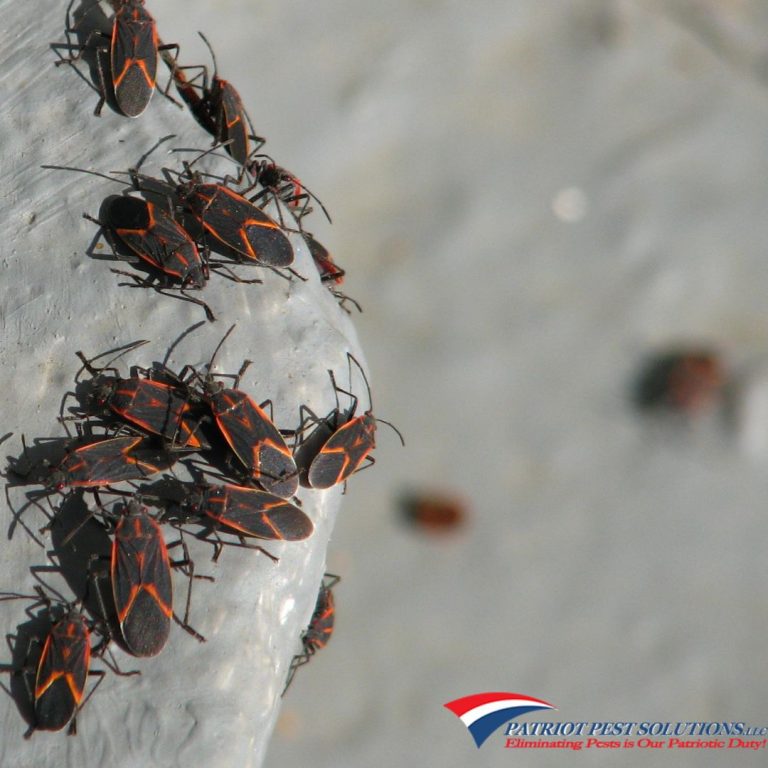The World of Boxelder Bugs
Welcome to the fascinating, if somewhat vexing, world of Boxelder Bugs. As we delve into the life of these small creatures, we will uncover a trove of knowledge about their characteristics, behavior, potential problems they may cause, and how to manage them effectively. So let’s start peeling back the layers of this intricately constructed insect world.
What Are Boxelder Bugs?
The Boxelder Bug, or Boisea trivittata if we’re being scientifically accurate, is a North American species of true bug. While generally harmless to humans, they can become quite a nuisance when their numbers skyrocket and they invade your living space in search of warmth and safety. Typically, these insects boast a striking black and red appearance that can be a sight to behold in the wild, but not so much when they’re crawling up your living room wall.
Boxelder Bugs: An Insight into Their Life Cycle
Boxelder Bugs lead quite the interesting life. Their life cycle begins as eggs, laid by females on trees, rocks, or even buildings during the warm summer months. These eggs hatch into nymphs that go through five stages, or instars, before reaching adulthood. This process typically takes around two months, giving rise to a new generation of adult bugs ready to begin the cycle anew.
Habitat and Diet: Where Do Boxelder Bugs Thrive?
Boxelder Bugs get their name from their preferred habitat: Boxelder trees. However, they are not particularly choosy and are known to take up residence in a variety of trees such as maple and ash. Their diet primarily consists of seeds and leaves from these trees, but when their numbers swell, they can wreak havoc on your home garden.
The Great Indoor Migration of Boxelder Bugs
As winter approaches, Boxelder Bugs turn into uninvited houseguests. Why, you may ask? Well, these bugs are not fans of cold weather and seek refuge in warmer places – your homes. They slip through cracks, gaps, and any small openings they can find, settling comfortably in your walls, attics, or basements. They’re mostly inactive during this period, reserving their energy for a spring awakening.
Boxelder Bugs: A Closer Look at Their Physical Features
With their distinctive black and red coloring, Boxelder Bugs are not hard to spot. Adults are about half an inch long, with a black body and red lines marking their abdomen and wings. Nymphs, on the other hand, are bright red when they hatch and gradually darken as they mature. An interesting fact is that despite their wings, these bugs are not particularly good flyers.
Are Boxelder Bugs Harmful?
Contrary to what their menacing appearance might suggest, Boxelder Bugs are quite harmless. They do not bite, sting, or transmit diseases. However, their sheer numbers can make them a pest. Additionally, when crushed, they emit a strong, unpleasant odor and can leave behind red stains.
Managing the Boxelder Bug Problem: An Overview
When Boxelder Bugs make a mass exodus to your home, it’s crucial to take action. The goal is not necessarily to kill them (they don’t survive indoors for long anyway), but to make your home less appealing so they don’t come back next year. Let’s explore some of these strategies.
Boxelder Bugs: Prevention Is Better Than Cure
Preventing a Boxelder Bug infestation is a multi-step process. Start by sealing off entry points such as cracks, gaps, and openings. Consider removing boxelder and other host trees near your home. If this is not an option, you can treat these trees with insecticides in early summer to control the bug population.
Managing an Active Boxelder Bug Infestation
If you’re already dealing with an infestation, don’t panic. Vacuuming is an effective way to remove these bugs from your home. Remember to empty the vacuum bag immediately to prevent the bugs from escaping. For severe infestations, you might need to call in a pest control professional.
The Impact of Boxelder Bugs on Gardens
When Boxelder Bugs venture into your gardens, they can cause damage by sucking sap from leaves, flowers, and young twigs. This feeding usually causes little harm to mature trees but can cause significant harm to young trees and plants.
Dealing with Boxelder Bugs in Your Garden
If Boxelder Bugs have set their sights on your garden, there are several steps you can take to protect your plants. Consider using insecticides or insecticidal soaps for small infestations. For larger infestations, you might need to bring in professional pest control services.
Frequently Asked Questions about Boxelder Bugs
- What attracts Boxelder Bugs to my house? Boxelder Bugs are attracted to warm, safe places to overwinter. They are especially attracted to buildings with a lot of sun exposure.
- Can Boxelder Bugs infest my house? Yes, Boxelder Bugs can invade your home in large numbers, especially during the fall as they seek warmth for the winter. However, they don’t breed indoors.
- Do Boxelder Bugs cause any damage? While Boxelder Bugs can be a nuisance, they don’t typically cause structural damage. However, they can stain surfaces with their feces and emit a foul odor when crushed.
- Are Boxelder Bugs dangerous? No, Boxelder Bugs are not dangerous. They do not bite or sting, and they don’t transmit diseases to humans or pets.
- How can I get rid of Boxelder Bugs? Preventive measures such as sealing entry points and removing boxelder trees can help. If you already have an infestation, consider vacuuming them up or calling a pest control professional.
- Can Boxelder Bugs fly? Yes, Boxelder Bugs have wings and can fly, but they are not particularly good at it.


